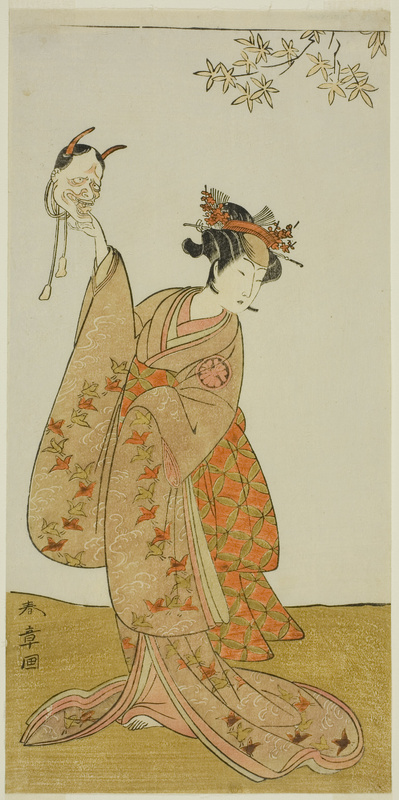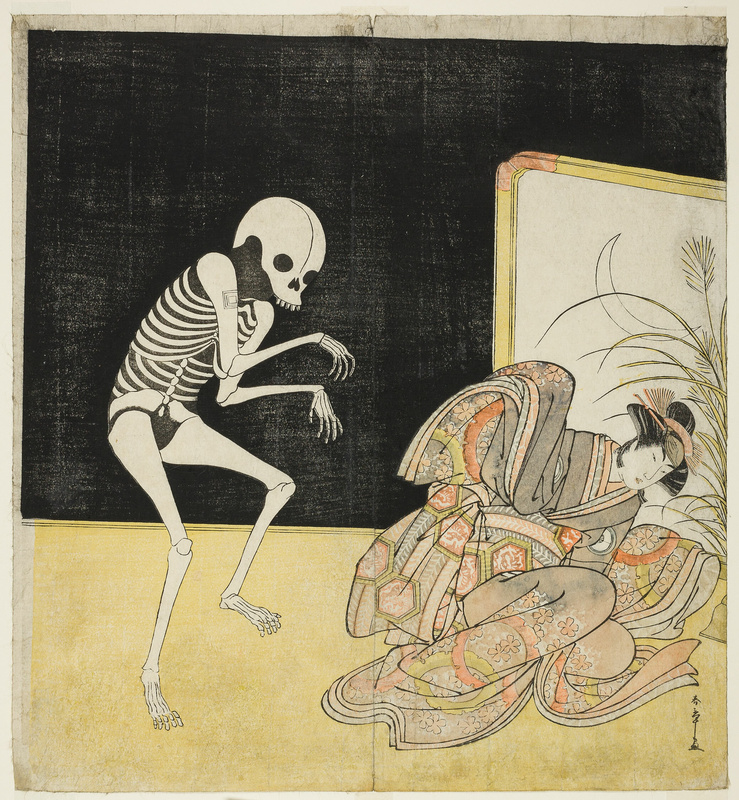Kabuki Theater
Kabuki theater, along with other forms of entertainment during the Edo period like sumo wrestling and courtesans, are common subjects for Ukiyo-e art as well. Because Ukiyo-e was all about “the floating world,” artists often glorified a more hedonistic lifestyle in which people could enjoy entertainment and pleasures outside of their jobs and home. This included courtesans, geisha, Sumo wrestlers, and Kabuki actors. Ukiyo-e artists were even commissioned by theaters to watch play rehearsals and draw the actors while they practiced their performances.
Kabuki theater was viewed as entertainment for lower classes. The plays were performed in elaborate costumes with intense makeup – usually white-painted faces and bright red eye makeup – and drew their stories from traditional legends, historical events, and classic or popular stories. They tended to feature characters like demons, ghosts, and samurai. Because Kabuki was such a popular form of entertainment for the middle and lower class people of Japan, the actors essentially became celebrities, and Ukiyo-e artists capitalized off of their fame by creating prints of them to sell. They could often be found sitting outside of the theater while plays were being performed, making prints to sell to the adoring fans of the actors.
In one famous play, Flower of Edo: An Ichikawa Saga (Edo no Hana Mimasu Soga), a monk is forced to end his own life after a love affair with the Cherry Princess leads to him being driven away from his own temple for breaking his vow of abstinence. This print shows the monk as he returns as a ghost, depicted as a skeleton, to haunt the princess after he dies alone and impoverished. In Kabuki theater, the actor in this scene would have been wearing a black costume with bones painted on it.
Dance sequences were also common in Kabuki theater, and they often represented the climax of the play. The print “Ichikawa Monnosuke II as Shimokōbe Shōji Yukihira and Segawa Yūjiro I as Matsukaze, Sister of Togashi no Saemon” is a scene from another famous play, Your Favorite Play: The Subscription List. This print is most likely one third of a triptych showing a dance sequence. In the play, a young warrior falls in love with a beautiful woman at the height of autumn. The woman, however, turns out to be a demon in disguise. The actor playing the woman is holding up a demon mask, or hannya, to represent her true nature.
The plays were only allowed to be performed by men, as women were barred from the industry by the strict conservative government during the Edo period, due to the prostitution that usually took place among actresses and their fans. Kabuki fans did not necessarily go see plays for the plot, but for the actors. The highlight of seeing a Kabuki play was mie, or the act of performing a famous pose on stage. An actor was judged based on his ability to perform his special pose, and these poses are what made their way most famously into Ukiyo-e art.

